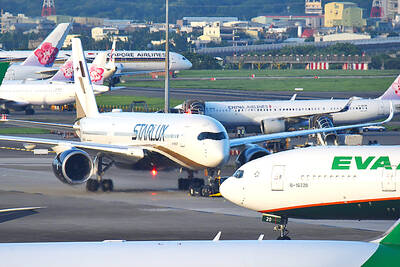A study disputing findings that the US lags in Internet speeds said on Wednesday that Americans have better access to broadband than most Europeans.
The University of Pennsylvania study contradicts many previous surveys that suggest US consumers pay more for Internet access, with lower speeds.
The latest study led by Christopher Yoo of the university’s Center for Technology, Innovation and Competition found 82 percent of Americans had access to “next-generation” Internet, with speeds above 25 megabits per second, compared with 54 percent in Europe.
In rural areas, the US led by 48 to 12 percent, the study found.
“The empirical evidence confirms that the United States is performing much better than Europe in the high-speed broadband race,” Yoo said.
“Worries that the US is falling behind are severely misplaced,” he said.
The Penn study also found a much wider deployment of 4G wireless broadband technology known as LTE, or long-term evolution, in the US, available to 86 percent of the population compared with 27 percent in Europe.
The findings included some caveats that explain to some degree the varied findings of previous studies.
Penn researchers found US download speeds during peak times averaged 15Mbps, below the European average of 19Mbps. They found US broadband was less expensive for speeds below 12Mbps and that Americans paid more for higher speeds, while consuming more bandwidth.
Another factor is the difference between advertised and real speeds. The study found actual download speeds in the US were 96 percent of what was advertised, compared with 74 percent in Europe.
Other studies offer a different view. The World Economic Forum ranked the US 35th in terms of Internet bandwidth available per user, and a private survey by broadband testing firm Ookla ranks the US 32nd in the world.
A study last year by the Organisation for Economic Co-operation and Development (OECD) also ranked the US low in broadband. However, Penn researchers said the OECD used a far slower standard for broadband, “a service tier that is generally regarded as obsolete.”

RECYCLE: Taiwan would aid manufacturers in refining rare earths from discarded appliances, which would fit the nation’s circular economy goals, minister Kung said Taiwan would work with the US and Japan on a proposed cooperation initiative in response to Beijing’s newly announced rare earth export curbs, Minister of Economic Affairs Kung Ming-hsin (龔明鑫) said yesterday. China last week announced new restrictions requiring companies to obtain export licenses if their products contain more than 0.1 percent of Chinese-origin rare earths by value. US Secretary of the Treasury Scott Bessent on Wednesday responded by saying that Beijing was “unreliable” in its rare earths exports, adding that the US would “neither be commanded, nor controlled” by China, several media outlets reported. Japanese Minister of Finance Katsunobu Kato yesterday also

China Airlines Ltd (CAL, 中華航空) said it expects peak season effects in the fourth quarter to continue to boost demand for passenger flights and cargo services, after reporting its second-highest-ever September sales on Monday. The carrier said it posted NT$15.88 billion (US$517 million) in consolidated sales last month, trailing only September last year’s NT$16.01 billion. Last month, CAL generated NT$8.77 billion from its passenger flights and NT$5.37 billion from cargo services, it said. In the first nine months of this year, the carrier posted NT$154.93 billion in cumulative sales, up 2.62 percent from a year earlier, marking the second-highest level for the January-September

‘DRAMATIC AND POSITIVE’: AI growth would be better than it previously forecast and would stay robust even if the Chinese market became inaccessible for customers, it said Taiwan Semiconductor Manufacturing Co (TSMC, 台積電) yesterday raised its full-year revenue growth outlook after posting record profit for last quarter, despite growing market concern about an artificial intelligence (AI) bubble. The company said it expects revenue to expand about 35 percent year-on-year, driven mainly by faster-than-expected demand for leading-edge chips for AI applications. The world’s biggest contract chipmaker in July projected that revenue this year would expand about 30 percent in US dollar terms. The company also slightly hiked its capital expenditure for this year to US$40 billion to US$42 billion, compared with US$38 billion to US$42 billion it set previously. “AI demand actually

Jensen Huang (黃仁勳), founder and CEO of US-based artificial intelligence chip designer Nvidia Corp and Taiwan Semiconductor Manufacturing Co (TSMC, 台積電) on Friday celebrated the first Nvidia Blackwell wafer produced on US soil. Huang visited TSMC’s advanced wafer fab in the US state of Arizona and joined the Taiwanese chipmaker’s executives to witness the efforts to “build the infrastructure that powers the world’s AI factories, right here in America,” Nvidia said in a statement. At the event, Huang joined Y.L. Wang (王英郎), vice president of operations at TSMC, in signing their names on the Blackwell wafer to